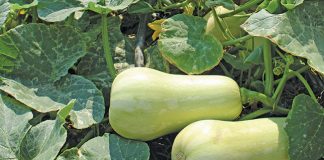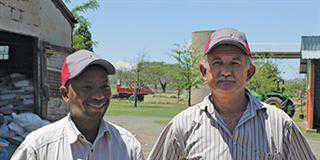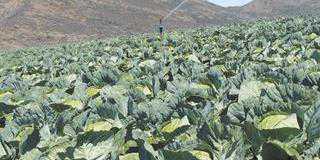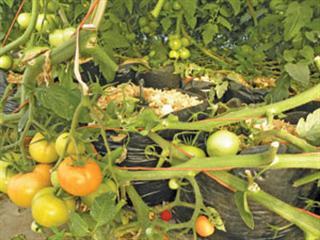
When Stuart Borchers returned to the family sugar cane farm in Paddock, KwaZulu-Natal at the age of 24, after studying civil engineering and serving in the defence force, he brought with him his wife Benita and their first child. But it was clear that the income from the 170ha Salasel Farm would not be sufficient to support both his family and his parents.
“We are in a marginal cane area and the long, dry spells we have been experiencing have not helped. Yields have been gradually declining from an average of 95t/ ha sugar cane in good years to 50t/ha or less in bad years,” says Stuart. His first step to diversify the farm’s income stream was to plant 1ha under macadamias in 1994, making him one of the first producers on the KZN South Coast to plant this tree nut.
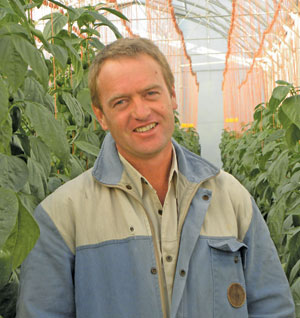
Stuart Borchers
He has continued to expand the orchards by pulling out small areas of cane at a time and currently has 18ha planted under macadamias. The orchards perform well, producing a minimum of 4t/ha unshelled, but they provide an income only once a year. And with full nut bearing potential being reached only after year eight, the macadamias fell short of delivering on financial goals.
Diversifying
So in 2000, Stuart and his father Rowan began dabbling in hydroponic farming as a means to provide a constant, weekly income. He began by constructing four 30m x 8m tunnels. “We were fortunate that through sugar cane we could afford to put up the first few tunnels. It started as a hobby but it soon became clear that higher volumes were needed. It is more cost-effective, and not more expensive (apart from the initial capital outlay) to expand,” says Stuart.
Three years later, Stuart had expanded to 25 tunnels and currently has 2ha under tunnel, with 54 home-made tunnels and two larger Richel structures imported from France. The largest Richel structure is 2 400m², with a gutter height of 4,5m and a structure height of 7,5m.
The dominant crop is tomatoes, making up 90% of production. While production dips in the cold winter months, he averages 7kg to 9kg tomatoes per plant or about 400t tomatoes a year. In 2007, he diversified into red and yellow peppers and currently produces about 15t a year.
Water treatment
Once Stuart moved into hydroponics, water quality became an overriding concern. “Many diseases, such as bacterial wilt which is endemic to this area, can be found in the water. We have spent a lot of time and money over the years on water purification and are always fiddling and upgrading our water treatment plant to get water 100% clean.”
Water from the farm dam is put through a cleaning process and then stored in holding tanks. This involves pumping the dam water through a process in which caustic soda, chlorine and a flocculant are added. Caustic soda adjusts the pH to 7 which is a little higher than the optimum nutrient absorption pH level as the addition of fertiliser drops the pH level to between 5,8 and 6.
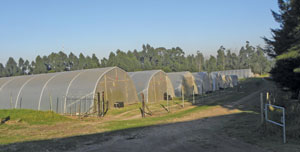
The farm has 2ha of tunnels, predominantly used for tomato production. The tunnels are home-made and built according to a modular design.
After this, chlorine is added to kill pathogens such as bacteria, germs and viruses as well as removing iron from the water.
An aluminium-based flocculant is added and the water goes into a clarifier. The clarifier slows down the water flow, allowing sufficient time for the flocculant to set off a reaction known as flocculation, whereby the fine organic compounds clump together into ‘flakes’ or floc. The floc sinks to the bottom of the separator, allowing clean water to be siphoned off the top and pumped to the 400 000l storage tanks, sufficient for three days.
Thereafter the water receives an ozone gas treatment, which oxidises and dissolves organic material such as pathogens as well as inorganic substances such as iron. Water passes through a final ultraviolet disinfection to destroy any remaining bacteria, before it is pumped to the tunnels. “Water is the essence of hydroponic farming. We believe if we supply the plants with good quality, disease-free water, we are at least starting from a good base.”
Management
Record keeping is another cornerstone of the farming enterprise. Data from each tunnel, such as pH levels and incoming and outgoing electrical conductivity, are recorded daily. “With strict record keeping, I can tell early on if something is going wrong, such as a build-up of salt or a blocked solenoid, so I have enough time to rectify it before it affects the crop. Record keeping allows me to control crops on a daily basis. It keeps me on top of my game.”
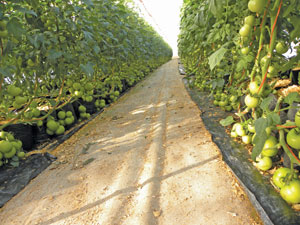
Three thousand tomato plants are planted every three weeks to ensure reliable volumes throughout the year.
Seedlings are grown in the farm nursery and 3 000 plants go in every three weeks. Stuart uses only soft chemicals with a withholding period of three days or less. This allows time for the chemicals to break down before the consumer buys the produce from the supermarket. Stuart’s mother Corinne and wife Benita monitor the grading table to ensure quality is up to scratch. The quality of their tomatoes is high, with a pack-out rate of over 80% first grade tomatoes.
“Continual reinvestment in tunnels and water purification is paying off. We are building a reputation for producing a quality product which is relatively constant throughout the year. It has enabled us to achieve our goal of having a reliable income throughout the year.”
Contact Stuart Borchers at [email protected].











